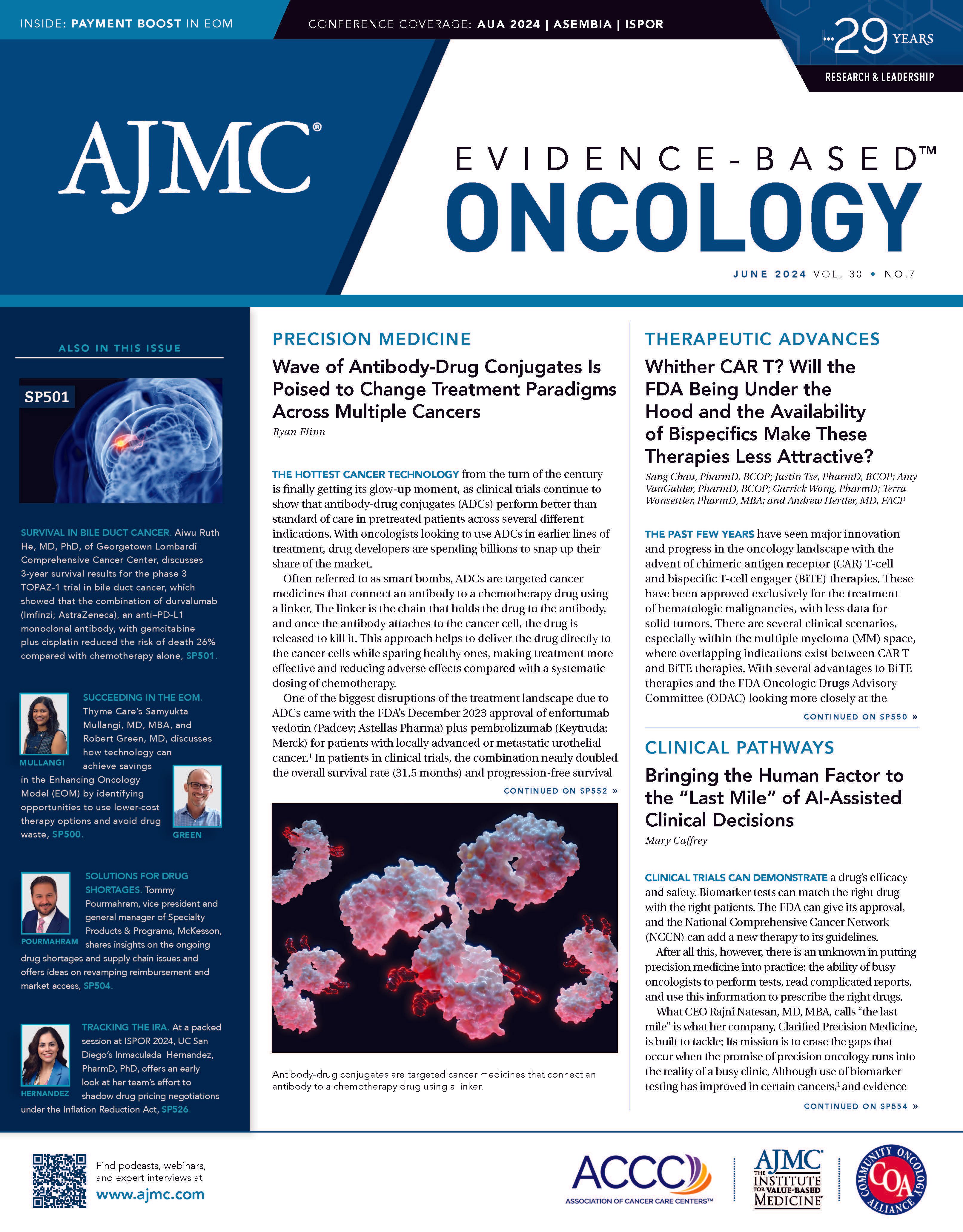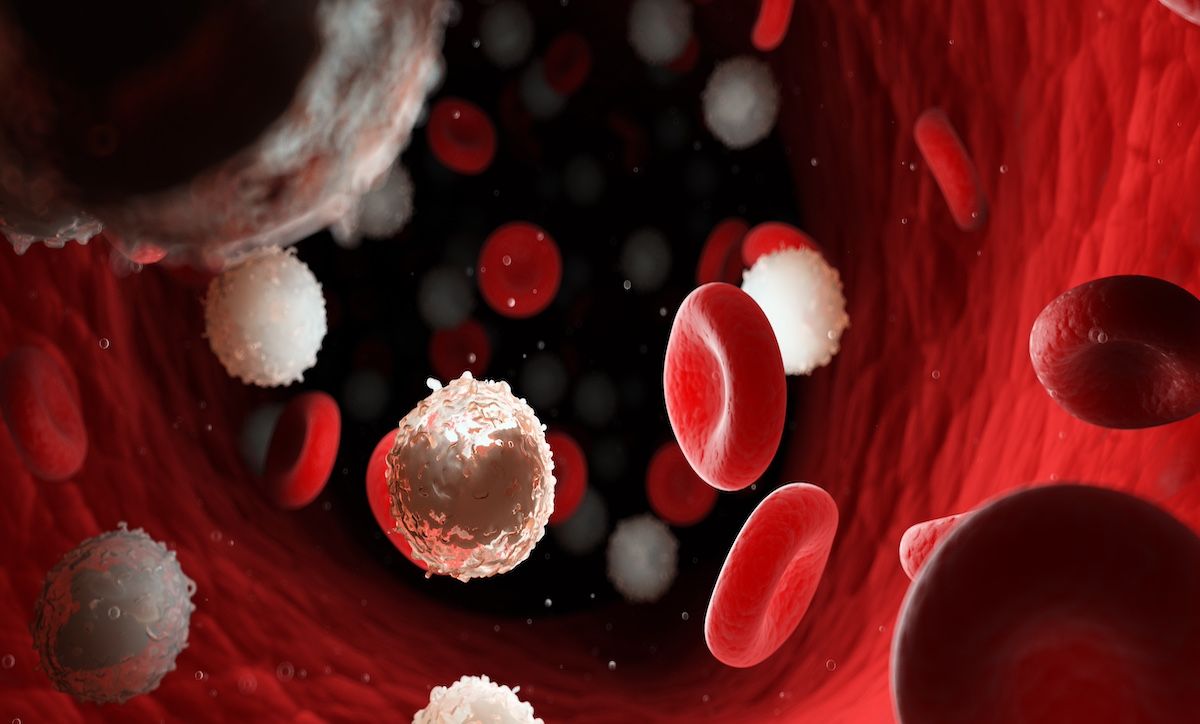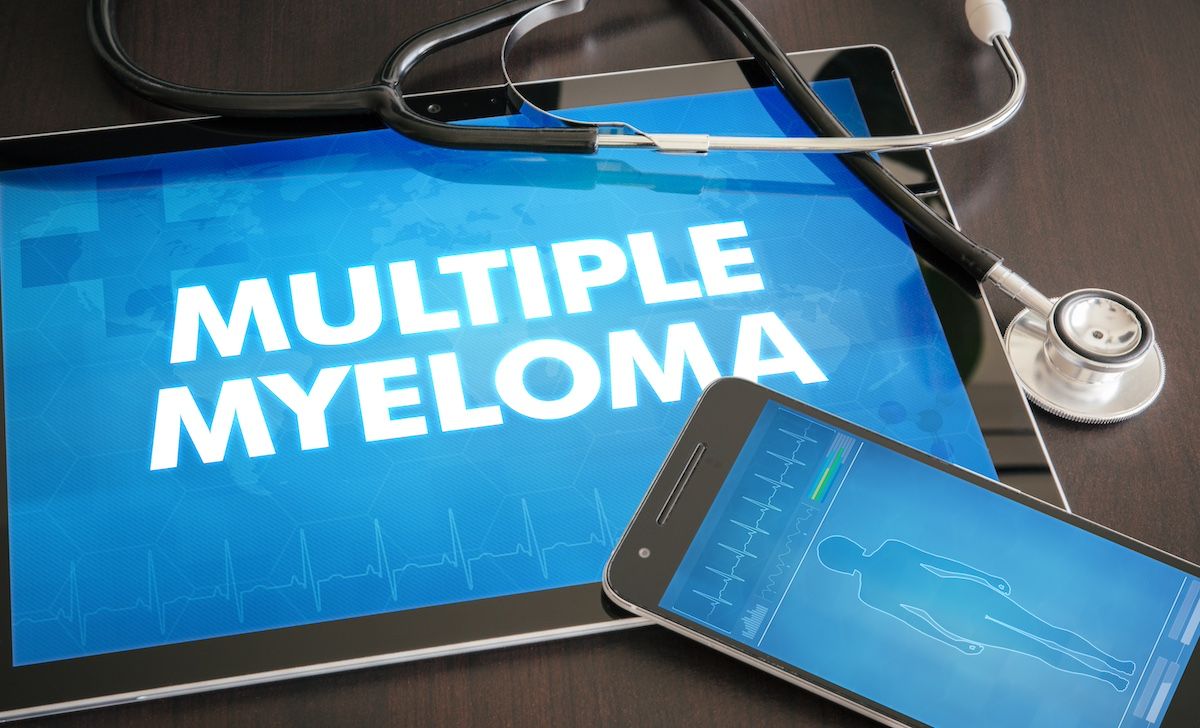Publication
Article
Evidence-Based Oncology
Aiwu Ruth He, MD, PhD, Discusses 3-Year Survival Data for Durvalumab Plus Chemo in Biliary Tract Cancer, Other Advances
Author(s):
Biliary tract cancers (BTCs) are known to be aggressive and hard to treat. They include cholangiocarcinoma, which forms in the bile ducts, as well as gallbladder cancer.1 Bile duct cancer is considered rare, with 210,000 cases diagnosed worldwide each year, but it is becoming more common in the United States.2 Prognosis is poor, with only 5% to 15% of patients surviving 5 years after diagnosis—and the survival rate is less than 5% for those with metastatic disease.3
Aiwu Ruth He, MD, PhD | Image credit: Medstar Health

Thus, the phase 3 TOPAZ-1 trial (NCT03875235) made big news in 2021 when it met its primary overall survival (OS) end point in an interim analysis. Among patients with newly diagnosed advanced BTC, the combination of durvalumab (Imfinzi; AstraZeneca Pharmaceuticals LP), an anti–PD-L1 monoclonal antibody, with gemcitabine plus cisplatin reduced the risk of death by 20% (HR, 0.80; 95% CI, 0.66-0.97; 2-sided P = .021).4
Asked to comment on uptake of the combination since the first results were reported for TOPAZ-1, an AstraZeneca official reported significant movement to durvalumab plus chemotherapy in first-line treatment.
“Since the FDA approval of TOPAZ-1, we have seen a shift in the treatment paradigm for BTCs, with more patients being diagnosed and having access to therapy, which is an important goal for patients,” Shubh Goel, AstraZeneca vice president and US franchise head for immuno-oncology and gastrointestinal (GI) tumors, wrote in an email to Evidence-Based Oncology (EBO). “We have seen the standard of care evolve to the TOPAZ-1 regimen, reflecting its status as a preferred [National Comprehensive Cancer Network] regimen.”
Results Durable After 3 Years
The next question was: Would the TOPAZ-1 results be durable? It turns out that the survival benefit of durvalumab with chemotherapy increases over time, with more than twice as many patients taking the durvalumab combination alive at 3 years compared with those who received chemotherapy alone (14.6% vs 6.9%, respectively).5
Announced at the Cholangiocarcinoma Foundation Conference in April 2024, the 3-year TOPAZ-1 results (median follow-up, 41.3 months) showed that the combination reduced the risk of death by 26% compared with chemotherapy (HR, 0.74; 95% CI, 0.63-0.87). The median OS was 12.9 months for durvalumabplus chemotherapy vs 11.3 months for chemotherapy alone. No new safety signals were reported, and 15.4% of patients experienced treatment-related adverse events in the durvalumab arm compared with 17.3% in the chemotherapy-only arm.5
Beyond TOPAZ-1, AstraZeneca has sponsored multiple trials in GI cancer evaluating the use of different immunotherapy combinations. Durvalumab is already approved in combination with the anti–CTLA-4 drug tremelimumab-actl (Imjudo; AstraZeneca Pharmaceuticals LP) for unresectable liver cancer.6
Other GI trials include the following:
- MATTERHORN, a phase 3 study (NCT04592913) evaluating durvalumab with a different chemotherapy combination in gastric and gastroesophageal junction cancers7
- EMERALD-1, a phase 3 study (NCT03778957) of durvalumab plus transarterial chemoembolization (TACE) in liver cancer8
- EMERALD-3, a phase 3 study (NCT05301842) of durvalumab plus tremelimumab and TACE, with or without lenvatinib (Lenvima; Eisai), in certain liver cancers9
- GASTRIC CANCER is among the diseases being evaluated in phase 2 studies (NCT03780608) targeting the use of DNA damage repair (DDR) to give immunotherapy a boost with ceralasertib, an oral kinase inhibitor of ataxia telangiectasia and Rad3 related protein, or ATR, described as a “master regulator” of DDR.10
To learn more, EBO spoke with TOPAZ-1 phase 3 lead investigator Aiwu Ruth He, MD, PhD, an associate professor of medicine and leader of the GI Cancer Program at Georgetown University’s Lombardi Comprehensive Cancer Center at Medstar Georgetown University Hospital in Washington, DC. He discussed both the recent TOPAZ-1 results as well as general advances treating BTCs.
This interview has been lightly edited for clarity.
EBO: What are the most important takeaways from this new long-term survival data for TOPAZ-1?
He: These are follow-up data at 36 months from randomization. For a disease that does not have a good prognosis at the advanced stage, this is sort of data we have been looking for. It is reported with a combination of durvalumab with gemcitabine plus cisplatin, and the 3-year survival rate reached about 15%, which is [progress] compared with the data previously reported with just the chemotherapy alone. So this has shown that a group of patients may benefit and have improved long-term outcomes.
EBO: Did any particular subgroups stand out in the results?
He: There was previously an abstract presented11 that looked at the long-term survival in patients treated with durvalumab plus [chemotherapy] vs [chemotherapy], and there’s no clear biomarker. So I do not think we have a clear way to tell up front when a patient is first diagnosed before the time of treatment who will have prolonged survival.
EBO: Biliary tract cancers in general have had poor survival rates. Even with the improved survival benefit with durvalumab, this is still a disease with long-term survival outcomes that are not as good as those seen in some other cancers. Can you talk about other combinations you are studying with durvalumab? What does the pipeline look like going forward?
He: We have the [combination of an anti–PD-L1 plus chemotherapy]; you have seen the results. Now there are studies of additional immune checkpoint inhibitors in combination. There are trials testing anti–CTLA-4, anti-TIGIT, and anti-LAG3 that are being added to this combination with a hope that we will improve the response rate and improve the percentage of patients who will survive a longer time.
I’ve not mentioned any specific compounds for those targets, but those are targets people have been interested in to target as part of the combination.
EBO: What’s the time horizon for seeing some of those results?
He: It is still quite early. There have been some data reported in smaller studies, [but] I think it will take a couple of years. Some of these combinations are being tested in advanced cholangiocarcinoma, and these usually take a couple of years to see [whether] there was a true additional benefit. Some of those combinations are still at phase 2.
EBO: In recent years, we’ve seen a lot of activity involving BTC and the use of specific targets in a disease that did not have progress for a long time. How would you characterize these long-term TOPAZ-1 results alongside some of the other recent results in BTC?
He: We can talk about advanced-stage disease. Then we can talk about early-stage disease. For advanced disease, I would divide the field into precision oncology and immuno-oncology. Currently, there are positive data from randomized phase 3 studies on the first-generation anti–PD-L1 with chemotherapy. We’ve made progress in the TOPAZ-1 study, as seen in the 3-year survival [results].
In precision oncology, not all mutations in cancer can be driving mutations. When the tumor has a driving mutation, if you target that driving mutation, you could have an impact on the cancer; you can have an impact on the cancer treatment. And cholangiocarcinoma is a disease with a lot of mutations. Many of those [treatments] are actually targeting mutations. We know that because we’ve seen positive results from targeted therapy for those specific mutations. So, it is a very active field.
FGFR2 fusion is a very, very viable target, and the IDH1 mutation is also a viable target; HER2 amplification is a good target; BRAF mutation is also a good target. So for this rare disease, we’ve made a lot of progress in precision oncology.
When you talk about precision oncology, then you have to talk about molecular profiling. It is very important to obtain a molecular profile on these patients to identify [whether] a patient [carries] those important mutations that will connect them to an effective targeted therapy. Today, trials are testing these targets in the frontline setting because most indications are for second-line treatment; this is for advanced disease.
EBO: What comes to mind when you mention HER2 is the recent approval for trastuzumab deruxtecan (Enhertu; Astrazeneca/Daiichi Sanyko) based on the DESTINY-PanTumor02 trial (NCT04482309).12 With this recent approval, is that a therapy you will be testing?
He: As you can see, this is an additional treatment for patients with HER2-amplified tumors because it’s an agnostic approval. When you look at cholangiocarcinoma, the incidence of HER2 amplification differs depends on that anatomic location; gallbladder cancer has the highest rate of HER2 amplification. So now I think all patients should be tested—[and] if they have HER2 amplification, we have an additional treatment for them.
EBO: So, we will have a high number of patients with BTC who will have a therapeutic target, but for many patients there is no target. For patients who do not have a mutation that can be targeted, the TOPAZ-1 study shows there is an option for them as well.
He: There was an abstract on the TOPAZ-1 study13 from [the European Society for Medical Oncology] that showed among who participated in TOPAZ-1, there were some patients who had a genetic alteration, [although] most did not. The patients with a genetic alteration [still had a response] to durvalumab plus gemcitabine plus cisplatin. So you can see that even for patients who have those specific genetic alterations, they may still benefit from this combination. We should not exclude them from the immunotherapy combination.
The immunotherapy combination in TOPAZ-1 has been tested in the frontline setting. Currently, many targeted therapies are used after the patient has progressed, and we currently don’t have any data. We should carry out studies to test this.
References
- Marcano-Bonilla L, Mohamed EA, Mounajjed T, Roberts LR. Biliary tract cancers: epidemiology, molecular pathogenesis and genetic risk associations. Chin Clin Oncol. 2016;5(5):61. doi:10.21037/cco.2016.10.09
- Ferlay J, Colombet M, Soerjomataram I, et al. Estimating the global cancer incidence and mortality in 2018: GLOBOCAN sources and methods. Int J Cancer. 2019;144(8):1941-1953. doi:10.1002/ijc.31937
- Survival rates for bile duct cancer. American Cancer Society. Updated March 1, 2023. Accessed May 19, 2024. https://www.cancer.org/cancer/types/bile-duct-cancer/detection-diagnosis-staging/survival-by-stage.html
- Oh DY, Ruth He A, Qin S, et al. Durvalumab plus gemcitabine and cisplatin in advanced biliary tract cancer. NEJM Evid. 2022;1(8):EVIDoa2200015. doi:10.1056/EVIDoa2200015
- Imfinzi plus chemotherapy doubled overall survival rate at three years for patients with advanced biliary tract cancer in TOPAZ-1 phase III trial. News release. AstraZeneca. April 16, 2024. Accessed May 18, 2024. https://www.astrazeneca.com/media-centre/press-releases/2024/imfinzi-plus-chemotherapy-doubled-overall-survival-rate-at-three-years-for-patients-with-advanced-biliary-tract-cancer-in-topaz-1-phase-iii-trial.html
- FDA approves tremelimumab in combination with durvalumab for unresectable hepatocellular carcinoma. FDA. Updated October 24, 2022. Accessed May 18, 2024. https://www.fda.gov/drugs/resources-information-approved-drugs/fda-approves-tremelimumab-combination-durvalumab-unresectable-hepatocellular-carcinoma
- Janjigian YY, Van Custem E, Muro K, et al. MATTERHORN: phase III study of durvalumab plus FLOT chemotherapy in resectable gastric/gastroesophageal junction cancer. Future Oncol. 2022;18(20):2465-2473. doi:10.2217/fon-2022-0093
- Lencioni R, Kudo M, Erinjeri J, et al. EMERALD-1: a phase 3, randomized, placebo-controlled study of transarterial chemoembolization combined with durvalumab with or without bevacizumab in participants with unresectable hepatocellular carcinoma eligible for embolization. J Clin Oncol. 2024;42(suppl 3):LBA432. doi:10.1200/JCO.2024.42.3_suppl.LBA432
- Abou-Alfa GK, Fan J, Heo J, et al. 727TiP a randomised phase III study of tremelimumab (T) plus durvalumab (D) with or without lenvatinib combined with concurrent transarterial chemoembolisation (TACE) versus TACE alone in patients (pts) with locoregional hepatocellular carcinoma (HCC): EMERALD-3 Ann Oncol. 2022;33(suppl 7):S874. doi:10.1016/j.annonc.2022.07.851
- Kwon M, Kim G, Kim R, et al. Phase II study of ceralasertib (AZD6738) in combination with durvalumab in patients with advanced gastric cancer. J Immunother Cancer. 2022;10(7):e005041. doi:10.1136/jitc-2022-005041

Newsletter
Stay ahead of policy, cost, and value—subscribe to AJMC for expert insights at the intersection of clinical care and health economics.




